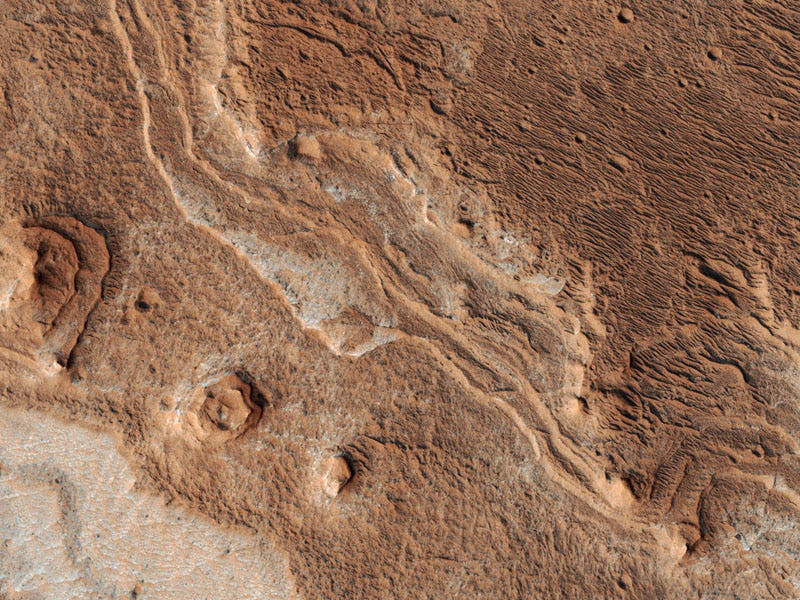Mars' "Eroded Layers" Look Absolutely Wild in New NASA Image
It could be evidence of an ancient lake.

Though it might look like an overhead shot of the Grand Canyon, the picture above is actually a shot of many eroded layers of sedimentary rock on Mars, known as the Shalbatana Valles. An innumerable amount of cracks, fissures, and craters adorn the Martian surface in what is ultimately a stunning work of natural art.
These crevices were captured by NASA’s Mars Reconnaissance Orbiter (MRO) on Monday. MRO was rocketed into space in 2005 to search for evidence of water on the surface of Mars.
The Shalbatana Valles is a prominent channel that slices through Mars’ Xanthe Terra — a gigantic depression just north of the Martian equator, home to many ancient river valleys and deltas. The Shalbatana Valles is a relic harkening back to a time when water might have flowed across the planet.
The eroded channels of Mars' Shalbatana Valles.
This dried up waterway was the first piece of evidence that the Red Planet once had running water coursing through these streams, roughly 3.4 billions years ago. Scientists believe the water that carved out these rock formations originated from an ancient lake that has since dried out. If this is true, Mars could have possibly been home to microbial life.
Countries, companies, and organizations — such as SpaceX, NASA, and the United Arab Emirates — have long been interested in creating settlements our planetary neighbor because of its history of potentially hosting microscopic organisms. Evidence of water like the image of the Shalbatana Valles only serve as a driver to keep those aspirations alive.
While we don’t have humans on Mars yet, one thing’s for sure — it’ll be one hell of a journey to get them there.